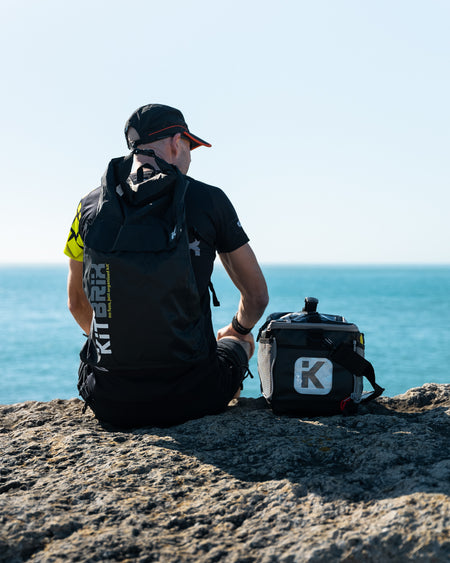
Taking part in a triathlon is quite a feat. It is a race that combines three separate disciplines back to back; swimming, cycling and running. The distance of each triathlon varies greatly, with multiple distances to choose from including the Super Sprint Triathlon, Sprint Triathlon, Olympic Triathlon, Half-Ironman and Ironman Triathlon (Read our blog on different triathlon races here). With the longest triathlon the ‘Ironman’ covering 226km, knowing what to eat before a triathlon is paramount in giving your body the energy and resources it needs. If you get your triathlon nutrition wrong, your performance could suffer and result in a DNF against your race number (did not finish), the last thing any triathlete wants! If you fuel up correctly you can drive your performance to new heights and recover quicker. Keep reading to find out Kitbrix’s best triathlon nutrition tactics.

What to eat before a triathlon
Prior to competing in a triathlon (or any long distance race) carb loading is an important way of building up your glycogen stores ahead of the event. Another tip is to avoid overloading on fibre, this can lead to bloating and cramps, the last thing you need when you are pushing for the finish line!
It is recommended to eat 2-3 hours before the start of the race. This will allow your body enough time to build up your energy stores and to digest your food. This will prevent you from getting a stitch and nausea during the first leg, or hungry before you even begin. An ideal and balanced breakfast should include protein, carbohydrates and healthy fats. Porridge, almonds, peanut butter and fresh fruit are great options. Don’t forget a few glasses of water too!
What to eat during a triathlon
If your diet is balanced and nutritious, a triathlon that takes 120 minutes or less does not necessarily need refuelling during the race, only liquids for re-hydration. Your body will naturally have energy stores in your muscles in the form of glycogen to keep you at peak performance. However, depending on individual needs, and especially if the race takes longer such as the Olympic, Half Ironman and Ironman Triathlon, a refuelling strategy is recommended.
The benefit of competing in a triathlon is that there are three separate disciplines meaning you can adjust your refuelling needs for each leg. The transition stages also allow for a quick way to grab extra high-energy snacks to keep you topped up for the next phase. Energy drinks, sweets, energy bars, sandwiches, energy gels, dried fruits and flapjacks are ideal snack options for a triathlon.
- Triathlon Swim Nutrition: As this is the first leg of the race your body should have enough energy stores to keep you performing throughout the swim. However, if your swim is especially long or as a personal preference, energy drinks and gels are a quick way of taking in energy between lengths.
- Triathlon Cycle Nutrition: After having already completed the swim, when you get to the second leg of the triathlon you may be in need of an boost. It is important to remember that you should refuel before you feel your energy dipping, this could cost you valuable seconds. Eating solids on a bike is easier than when running or swimming so now would be a good point to refuel with snacks such as energy bars and flapjacks. Food is also easily stored on a bike with the help of straps and specially designed zip-up food bags. Don’t forget to rehydrate with water and energy drinks at this point too!
- Triathlon Run Nutrition: As you enter the final leg of the triathlon you may feel your energy reserves depleting. This is where sweets, gummies and energy gels can give you a pick-me-up to push you to the finish line. These small energy filled snacks are also easy to transport whilst running so your performance isn’t impeded.

What to eat after a triathlon
After crossing the finish line it could be tempting to sip on an alcoholic beverage, however, post triathlon nutrition is just as important as fuelling up before the race. In the 15-30 minutes after you’ve completed your triathlon and finished celebrating it is recommended to consume 15-25 grams of protein, 40-50 grams of carbohydrates and 240-300 calories. This equates to a light snack such as a peanut butter sandwich or a bowl of cereal with yogurt.
Once you’ve returned home, dried off and finally gotten warmed up, tuck into a hearty meal of fish and green vegetables. These foods contain lots of anti-inflammatory properties which will help your muscles recover fast and ease soreness the next day.
Top tip: Practice what you eat for a triathlon. Each body is different, has different needs and reacts differently to certain foods, stress and exercise. Listen to your body and find what works for you. Don’t experiment on the big day!







